Best way to make nose release on platform launch
-
AKhanggliding
- Posts: 1
- Joined: 2014/12/18 21:38:45 UTC
Best way to make nose release on platform launch
Ok folks. I tried searching forum first but got some web page errors (probably because I am using my phone) so I thought I would post a topic.
I run a little platform launch out of the back of my truck in the summer in Fairbanks Alaska. I built it last summer and am taking the time to improve it this winter.
It needs many improvements but the first area I am looking to improve is the nose release. Lots of people have criticized my choice to have winch operator pull nose release after the pilot yells "Clear!"..I however have stuck with this because it allows the pilot to keep both hands on the bar...no way you can control it with one hand if things go sideways...I think of the operator as a voice operated release mechanism in this case.
Anyway..the actual release mechanism needs work..and I wanted to see what you guys are using for the nose release. I may rig it up to be launched by winch operator or by pilots knee if practical..I really want the pilot to have both hands on the bar at all times.
I wanna get this tow rig running as safe as possible. I have a new student I have been training for 1.5 years now (for free) and am thinking she may be ready for towing in another year or so.
She can fly flphg, hg and trikes now so I think she is almost ready, towing is easy but if things go wrong I think you need as many skills as possible.
I am kind of on the fence about continuing to to tow people, we only have 5 hg pilots up here and I want it to be as safe as possible. For some reason they seem to feel safe towing but are too scared to try FLPHG!! I think FLPHG is safer than towing and hill launching!! Anyway..they feel like the winch is fine as is..I dount feel that way at all.. fire away..
What is the safest nose release and why?
I can't post links to my vimeo channel because I am a new poster. To see my videos so you can critique my rig please google "alaska hang gliding vimeo". I just want to make it safer. I was only formally trained in aero-tow and build this rig with no help and live in BFE so I know it needs improvement. Lets start with the nose release..
Other improvements are on the way as well. Seat for winch operator. Shield between operator and winch. All pilots have to wear "claw gloves" I made ((they look like something from x men comics (wolverine) it is just a glove made of molded plastic that holds hook knife securely on the back of your hand at all times--no way you will be able to get hook knife out of your harness if things go sideways at least this way it is always ready to use)) and handles so pilot can hold on during taxi (like an aero tow cart).
I run a little platform launch out of the back of my truck in the summer in Fairbanks Alaska. I built it last summer and am taking the time to improve it this winter.
It needs many improvements but the first area I am looking to improve is the nose release. Lots of people have criticized my choice to have winch operator pull nose release after the pilot yells "Clear!"..I however have stuck with this because it allows the pilot to keep both hands on the bar...no way you can control it with one hand if things go sideways...I think of the operator as a voice operated release mechanism in this case.
Anyway..the actual release mechanism needs work..and I wanted to see what you guys are using for the nose release. I may rig it up to be launched by winch operator or by pilots knee if practical..I really want the pilot to have both hands on the bar at all times.
I wanna get this tow rig running as safe as possible. I have a new student I have been training for 1.5 years now (for free) and am thinking she may be ready for towing in another year or so.
She can fly flphg, hg and trikes now so I think she is almost ready, towing is easy but if things go wrong I think you need as many skills as possible.
I am kind of on the fence about continuing to to tow people, we only have 5 hg pilots up here and I want it to be as safe as possible. For some reason they seem to feel safe towing but are too scared to try FLPHG!! I think FLPHG is safer than towing and hill launching!! Anyway..they feel like the winch is fine as is..I dount feel that way at all.. fire away..
What is the safest nose release and why?
I can't post links to my vimeo channel because I am a new poster. To see my videos so you can critique my rig please google "alaska hang gliding vimeo". I just want to make it safer. I was only formally trained in aero-tow and build this rig with no help and live in BFE so I know it needs improvement. Lets start with the nose release..
Other improvements are on the way as well. Seat for winch operator. Shield between operator and winch. All pilots have to wear "claw gloves" I made ((they look like something from x men comics (wolverine) it is just a glove made of molded plastic that holds hook knife securely on the back of your hand at all times--no way you will be able to get hook knife out of your harness if things go sideways at least this way it is always ready to use)) and handles so pilot can hold on during taxi (like an aero tow cart).
- Tad Eareckson
- Posts: 9149
- Joined: 2010/11/25 03:48:55 UTC
Re: Best way to make nose release on platform launch
Welcome newest Kite Strings member, eighteenth poster, and sixteenth or better legitimate poster. Really great to have somebody else in the discussion on this hated little outpost of hang gliding.
http://www.kitestrings.org/post187.html#p187
http://www.kitestrings.org/post5561.html#p5561
http://www.kitestrings.org/post6086.html#p6086
http://www.kitestrings.org/post6096.html#p6096
And these aren't really discussions here. They're just references to relevant material on the Jack and Bob Shows:
http://www.hanggliding.org/viewtopic.php?t=21242
Mouth Release - Where / How can I get one ???
http://www.ushawks.org/forum/viewtopic.php?f=17&t=1211
payout
http://www.ushawks.org/forum/viewtopic.php?f=2&t=1563
Platform Launching (PL) Draft suggestions needed
1:12
http://vimeo.com/89281112
...velcroed to your downtube within easy reach?
Your biggest threat in that department is not coming from the nose release. If the effort and cost were the same you'd DEFINITELY wanna prioritize giving the pilot the capability of releasing the glider from tow with both hands on the bar - by a factor of several hundred.
I've personally known six people - myself included - who've crashed because they didn't have it. Mike Dead-Eye Robertson gassed me into a crosswind lockout just off the cart which cost me a downtube and a moderate beating when I was flying with a Koch two stage at Ellenville, John Dullahan broke a wrist when he launched with a monster thermal breaking off behind him at Quest, John Claytor got his neck rearranged trying to launch in a strong crosswind at Ridgely and may be permanently gone from the sport, Holly Korzilius got her face demolished when she PIOed on one point aero at Manquin, John Woiwode got severely and permanently demolished by trying to stay behind the truck in a crosswind near Rock Springs, Wyoming, and Joel Lewis and Frank Sauber locked out and died on winch tows at Columbia, South Carolina and Fredericksburg respectively.
Launching is always optional and it's pretty easy to not do it when there's any shit hitting or near any fans. That's not true with respect to getting off tow.

http://ozreport.com/pub/images/fingerlakesaccident2.jpg
http://ozreport.com/pub/images/fingerlakesaccident3.jpg

http://4.bp.blogspot.com/-bRrpHNa68iY/UQ6Pv9gRZyI/AAAAAAAAjTg/Hc22bx5122Q/s2048/20943781_BG1.jpg

...then skills tend not to do you any good. Fuck skills. I'm still waiting to see a video in which skills got someone out of a nasty situation. Get the basics down. Then try to stay with equipment and judgment - in that order.
http://www.kitestrings.org/post140.html#p140
http://farm9.staticflickr.com/8143/7462005802_bbc0ac66ac_o.jpg

...with great people skills.
1:35
http://vimeo.com/90443406
Bob Buxton accident
http://www.youtube.com/watch?v=_2oeb0nNIKs
Scott Buxton - 2013/02/10
dead
http://www.kitestrings.org/post5902.html#p5902
016-04308
http://farm4.staticflickr.com/3799/13746342624_c9b015f814_o.png

022-04610
http://farm3.staticflickr.com/2809/13746340634_a74b33d285_o.png
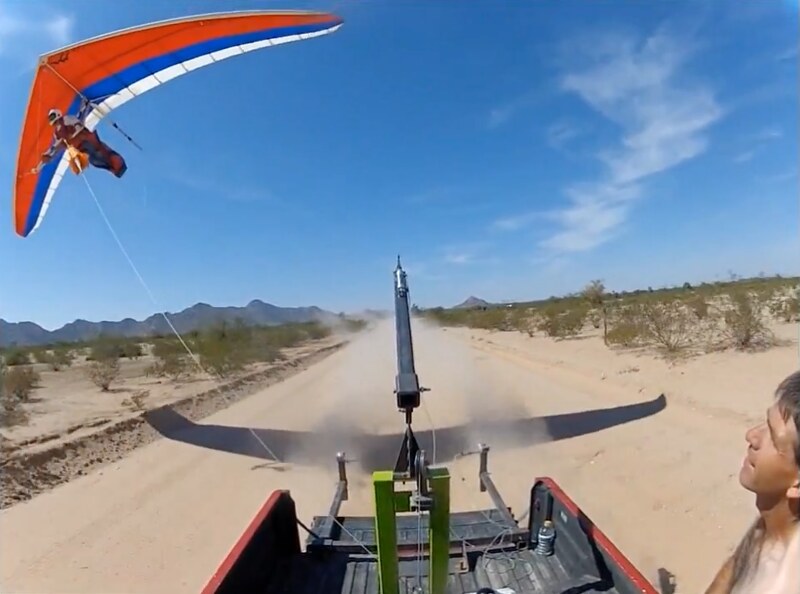
029-04917
http://farm4.staticflickr.com/3735/13746338404_0b90a8007d_o.png
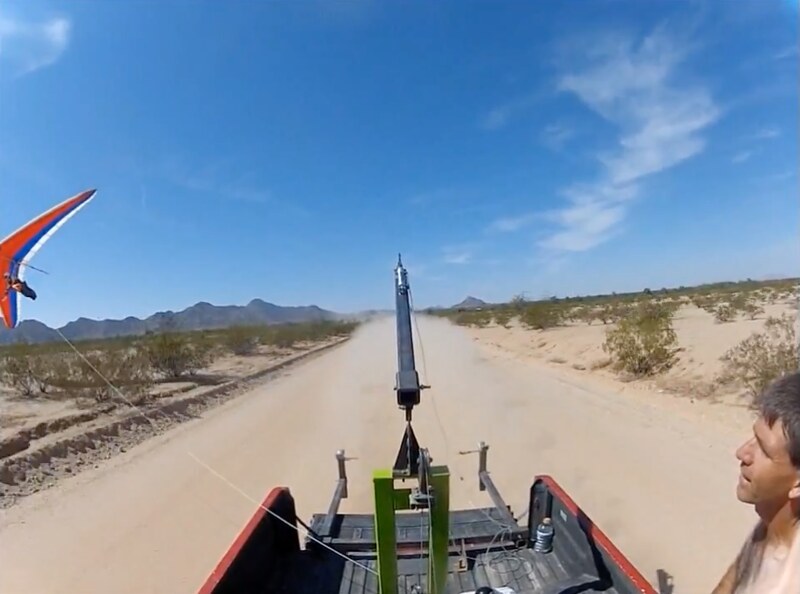
048-05019
http://farm8.staticflickr.com/7369/13745927073_bca8f1eec7_o.png
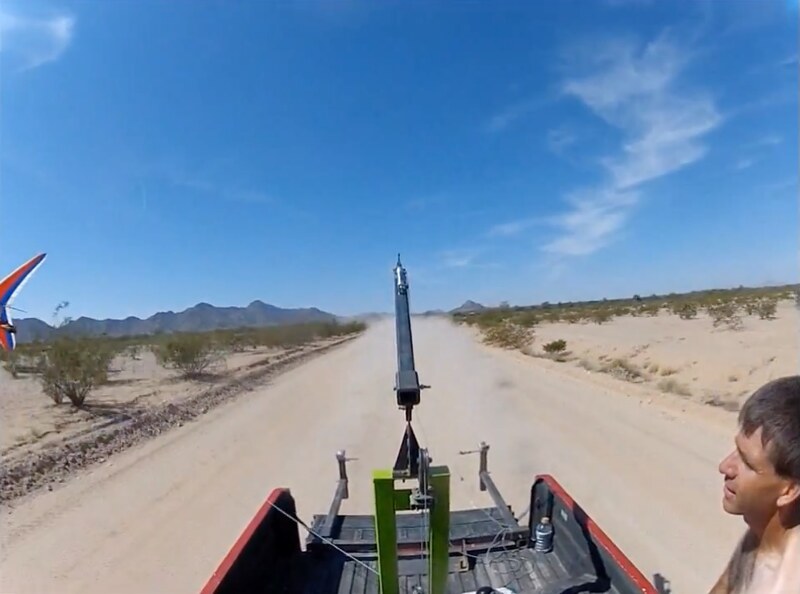
070-05111
http://farm8.staticflickr.com/7207/13745841035_6b79a43ea8_o.png
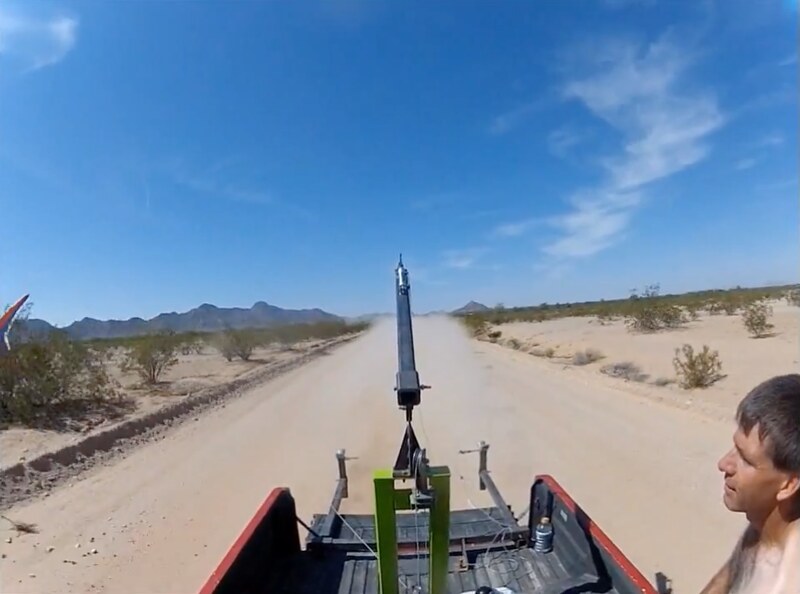
088-05301
http://farm4.staticflickr.com/3708/13746233274_c1a80f35c1_o.png

...in an emergency.
And I'd be real concerned about those things getting hung up on wires at bad times. We've got way more than enough problems with people getting just their HANDS...
http://www.youtube.com/watch?v=wNCrD6Cnc48
hang glider crash
bisfal bisto - 2014/01/24
dead
077-2529
http://c2.staticflickr.com/6/5578/14366477502_4e2e309770_o.png

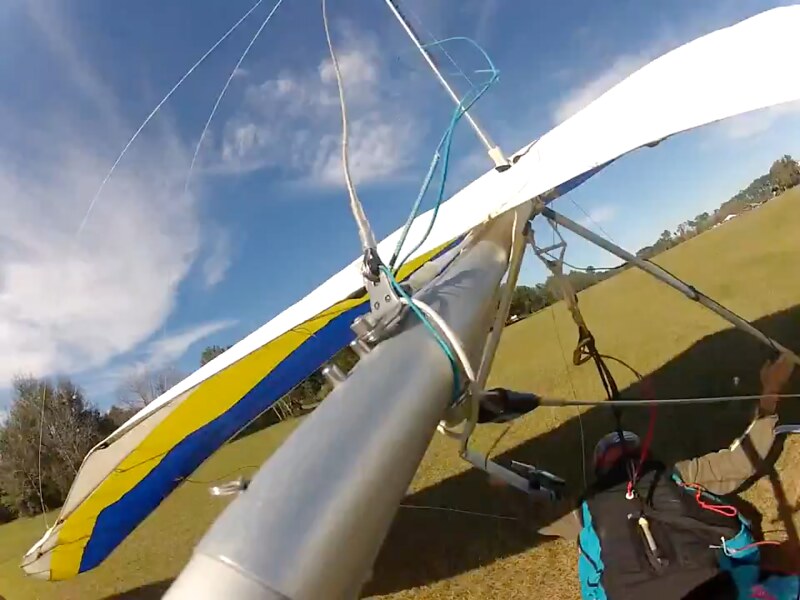
http://c2.staticflickr.com/6/5275/14388149063_aa5c58a7a5_o.png
094-2814
...hung up on wires at bad times.
Give ya points for creativity however.
There's this huge global scam that's been going on in hang glider towing ever since early 1981 when Donnell Hewett tried to rationalize his mostly insane approach to the issue of pulling these things into the air on ropes.
If you really mean what you say about...
Platform towing is so inherently safe that if you don't do anything really stupid you can probably get away with your regular three-string truck tow release indefinitely. But one good Bob Buxton caliber pooch screw package and a life gets destroyed or ended when a two hundred dollar assembly could've made it a minor inconsequential oops thing.
Lemme get this off and I'll work on addressing your nose release and other relevant issues.
And be advised that in this sport an individual such as yourself can make a real significant contribution - as several individuals on this forum already have.
You wouldn't have found much. I searched the word processing text archives I maintain on my hard drive and came up with:I tried searching forum first but got some web page errors (probably because I am using my phone)...
http://www.kitestrings.org/post187.html#p187
http://www.kitestrings.org/post5561.html#p5561
http://www.kitestrings.org/post6086.html#p6086
http://www.kitestrings.org/post6096.html#p6096
And these aren't really discussions here. They're just references to relevant material on the Jack and Bob Shows:
http://www.hanggliding.org/viewtopic.php?t=21242
Mouth Release - Where / How can I get one ???
http://www.ushawks.org/forum/viewtopic.php?f=17&t=1211
payout
http://www.ushawks.org/forum/viewtopic.php?f=2&t=1563
Platform Launching (PL) Draft suggestions needed
Almost three and a quarter hours of daylight these days. Hope you're applying a quality sunscreen before and after you go swimming at the lake.I run a little platform launch out of the back of my truck in the summer in Fairbanks Alaska.
Might as well, that's a pretty easy one.It needs many improvements but the first area I am looking to improve is the nose release.
Fuck 'em. That's perfectly OK, arguably ideal - 'cept it DOES require you to have a winch operator. And a winch operator can save or kill a glider that's having problems.Lots of people have criticized my choice to have winch operator pull nose release after the pilot yells "Clear!"
What happens if things go sidewise shortly after launch and you have some Aerotow Industry Standard piece of shit...I however have stuck with this because it allows the pilot to keep both hands on the bar...no way you can control it with one hand if things go sideways...
1:12
http://vimeo.com/89281112
...velcroed to your downtube within easy reach?
Your biggest threat in that department is not coming from the nose release. If the effort and cost were the same you'd DEFINITELY wanna prioritize giving the pilot the capability of releasing the glider from tow with both hands on the bar - by a factor of several hundred.
I've personally known six people - myself included - who've crashed because they didn't have it. Mike Dead-Eye Robertson gassed me into a crosswind lockout just off the cart which cost me a downtube and a moderate beating when I was flying with a Koch two stage at Ellenville, John Dullahan broke a wrist when he launched with a monster thermal breaking off behind him at Quest, John Claytor got his neck rearranged trying to launch in a strong crosswind at Ridgely and may be permanently gone from the sport, Holly Korzilius got her face demolished when she PIOed on one point aero at Manquin, John Woiwode got severely and permanently demolished by trying to stay behind the truck in a crosswind near Rock Springs, Wyoming, and Joel Lewis and Frank Sauber locked out and died on winch tows at Columbia, South Carolina and Fredericksburg respectively.
Launching is always optional and it's pretty easy to not do it when there's any shit hitting or near any fans. That's not true with respect to getting off tow.
Super. Downsides... You need to have an operator and there could be a miscommunication. Pilot operated mechanical release... You need more expensive and complex equipment and maybe the pilot squeezes off prematurely/accidentally maybe when a bump is hit. Pretty minor issues either way.I think of the operator as a voice operated release mechanism in this case.
Very few of us are using anything. I haven't been on the back of a truck in a bit over twenty years, most others have little to no platform history. Zack has a good bit but he's mostly disappeared from the forum. So you've got a pretty good claim to ranking member.Anyway..the actual release mechanism needs work..and I wanted to see what you guys are using for the nose release.
It would be brain dead easy to rig it so that it could be blown by the winch operator or the pilot. Should do it that way. Options in aviation are always super.I may rig it up to be launched by winch operator...
No. This is a complex inefficient solution to a nonexistent problem. I've done a bunch of platform launches, always launched myself with both hands on the basetube, and never had a problem....or by pilot's knee if practical..
Yeah, see above.I really want the pilot to have both hands on the bar at all times.
That will mean some significant pioneering work on the tow release.I wanna get this tow rig running as safe as possible.
I'm thinking she should've been ready 1.4 years ago - but I don't know her or what obstacles you've had to deal with.I have a new student I have been training for 1.5 years now (for free) and am thinking she may be ready for towing in another year or so.
If things go wrong on tow...She can fly flphg, hg and trikes now so I think she is almost ready, towing is easy but if things go wrong I think you need as many skills as possible.

http://ozreport.com/pub/images/fingerlakesaccident2.jpg
http://ozreport.com/pub/images/fingerlakesaccident3.jpg

http://4.bp.blogspot.com/-bRrpHNa68iY/UQ6Pv9gRZyI/AAAAAAAAjTg/Hc22bx5122Q/s2048/20943781_BG1.jpg

...then skills tend not to do you any good. Fuck skills. I'm still waiting to see a video in which skills got someone out of a nasty situation. Get the basics down. Then try to stay with equipment and judgment - in that order.
Develop a tow release that doesn't stink on ice and you can give hang gliding culture something that can make things much safer for thousands.I am kind of on the fence about continuing to tow people, we only have 5 hg pilots up here and I want it to be as safe as possible.
Never done that but...For some reason they seem to feel safe towing but are too scared to try FLPHG!!
http://www.kitestrings.org/post140.html#p140
I totally one hundred percent agree with what Zack's saying.Zack C - 2011/03/04 05:29:28 UTC
As for platform launching, I was nervous about it when I started doing it. It looked iffy, like things could get bad fast. I've since logged around 100 platform launches and have seen hundreds more. Never once was there any issue. I now feel platform launching is the safest way to get a hang glider into the air (in the widest range of conditions). You get away from the ground very quickly and don't launch until you have plenty of airspeed and excellent control. But equipment is more critical (like, you don't want your nose line to release early).
Hill launching, quite probably. Towing as it's most commonly practiced, maybe. Towing as it could be if it were really done right, I'd say probably not.I think FLPHG is safer than towing and hill launching!!
"As is", I'm sure I don't need to tell you, means well maintained and with the line properly wound.Anyway..they feel like the winch is fine as is..
Could - and hopefully will - be a long discussion.I don't feel that way at all.. fire away..
That's a little like asking what's the best doorstop and why. It's not that critical a piece of equipment, the function it serves isn't very demanding, nobody ever got scratched because a nose release jammed, it doesn't go up with the glider so you're not too worried about weight and drag. If you wanted to make a dangerous nose release you'd hafta engineer something that let go by itself at about twelve miles per hour airspeed.What is the safest nose release and why?
http://vimeo.com/garrettspeeterI can't post links to my vimeo channel...
Sorry 'bout that. That IS NOT by design/intent. You should have full privileges / no restrictions IMMEDIATELY upon activation. I'll go into the Administration Control Panel and poke around to see if there's something I can flip....because I am a new poster.
Been there. I've been watching a bit of your progress since you first surfaced.To see my videos so you can critique my rig please google "alaska hang gliding vimeo".
That will put you at serious odds with USHGA and the commercial hang gliding establishment - I totally kid you not. I wanted to make it safer and that persuasion cost me my flying career.I just want to make it safer.
There's some serious damage we'll hafta work hard on reversing.I was only formally trained in aero-tow...
Could be worse. You might have had help from folk......and built this rig with no help and live in BFE so I know it needs improvement.
http://farm9.staticflickr.com/8143/7462005802_bbc0ac66ac_o.jpg

...with great people skills.
Release you can actually USE...Let's start with the nose release..
Other improvements are on the way as well. Seat for winch operator. Shield between operator and winch.
1:35
http://vimeo.com/90443406
Bob Buxton accident
http://www.youtube.com/watch?v=_2oeb0nNIKs
Scott Buxton - 2013/02/10
dead
http://www.kitestrings.org/post5902.html#p5902
016-04308
http://farm4.staticflickr.com/3799/13746342624_c9b015f814_o.png

022-04610
http://farm3.staticflickr.com/2809/13746340634_a74b33d285_o.png

029-04917
http://farm4.staticflickr.com/3735/13746338404_0b90a8007d_o.png

048-05019
http://farm8.staticflickr.com/7369/13745927073_bca8f1eec7_o.png

070-05111
http://farm8.staticflickr.com/7207/13745841035_6b79a43ea8_o.png

088-05301
http://farm4.staticflickr.com/3708/13746233274_c1a80f35c1_o.png

...in an emergency.
Not really crazy about that one. Your PRIMARY RELEASE should be your PRIMARY means of RELEASING in any situation, normal or emergency, just like the brake pedal in your car. If you don't have total confidence that you're gonna be able to blow your release faster, easier, more effectively than your gonna be able to slash your way out of a situation then do some work on your release.All pilots have to wear "claw gloves" I made ((they look like something from x men comics (wolverine) it is just a glove made of molded plastic that holds hook knife securely on the back of your hand at all times-
And I'd be real concerned about those things getting hung up on wires at bad times. We've got way more than enough problems with people getting just their HANDS...
http://www.youtube.com/watch?v=wNCrD6Cnc48
hang glider crash
bisfal bisto - 2014/01/24
dead
077-2529
http://c2.staticflickr.com/6/5578/14366477502_4e2e309770_o.png


http://c2.staticflickr.com/6/5275/14388149063_aa5c58a7a5_o.png
094-2814
...hung up on wires at bad times.
Give ya points for creativity however.
No fuckin' way you'll be able to get to any release within easy reach if things go sideways - AS...-no way you will be able to get hook knife out of your harness if things go sideways at least this way it is always ready to use))
...YOU'VE JUST SAID.I however have stuck with this because it allows the pilot to keep both hands on the bar...no way you can control it with one hand if things go sideways...I think of the operator as a voice operated release mechanism in this case.
There's this huge global scam that's been going on in hang glider towing ever since early 1981 when Donnell Hewett tried to rationalize his mostly insane approach to the issue of pulling these things into the air on ropes.
Manned Kiting
The Basic Handbook of Tow Launched Hang Gliding
Daniel F. Poynter
1974
"Never take your hands off the bar." - Tom Peghiny
Just have a release within easy reach, use it before there's a problem, and, what the hell, you've got a nice light weak link which will break before you can get into too much trouble.Steve Kinsley - 1996/05/09 15:50
Personal opinion. While I don't know the circumstances of Frank's death and I am not an awesome tow type dude, I think tow releases, all of them, stink on ice. Reason: You need two hands to drive a hang glider. You 'specially need two hands if it starts to turn on tow. If you let go to release, the glider can almost instantly assume a radical attitude. We need a release that is held in the mouth. A clothespin. Open your mouth and you're off.
If you really mean what you say about...
...wanting to get your tow rig running as safely as possible the glider release has to be your priority. Otherwise...I wanna get this tow rig running as safe as possible.
Platform towing is so inherently safe that if you don't do anything really stupid you can probably get away with your regular three-string truck tow release indefinitely. But one good Bob Buxton caliber pooch screw package and a life gets destroyed or ended when a two hundred dollar assembly could've made it a minor inconsequential oops thing.
Lemme get this off and I'll work on addressing your nose release and other relevant issues.
And be advised that in this sport an individual such as yourself can make a real significant contribution - as several individuals on this forum already have.
- Tad Eareckson
- Posts: 9149
- Joined: 2010/11/25 03:48:55 UTC
Re: Best way to make nose release on platform launch
Here's a thought that just occurred to me...
http://www.getoffrelease.com/
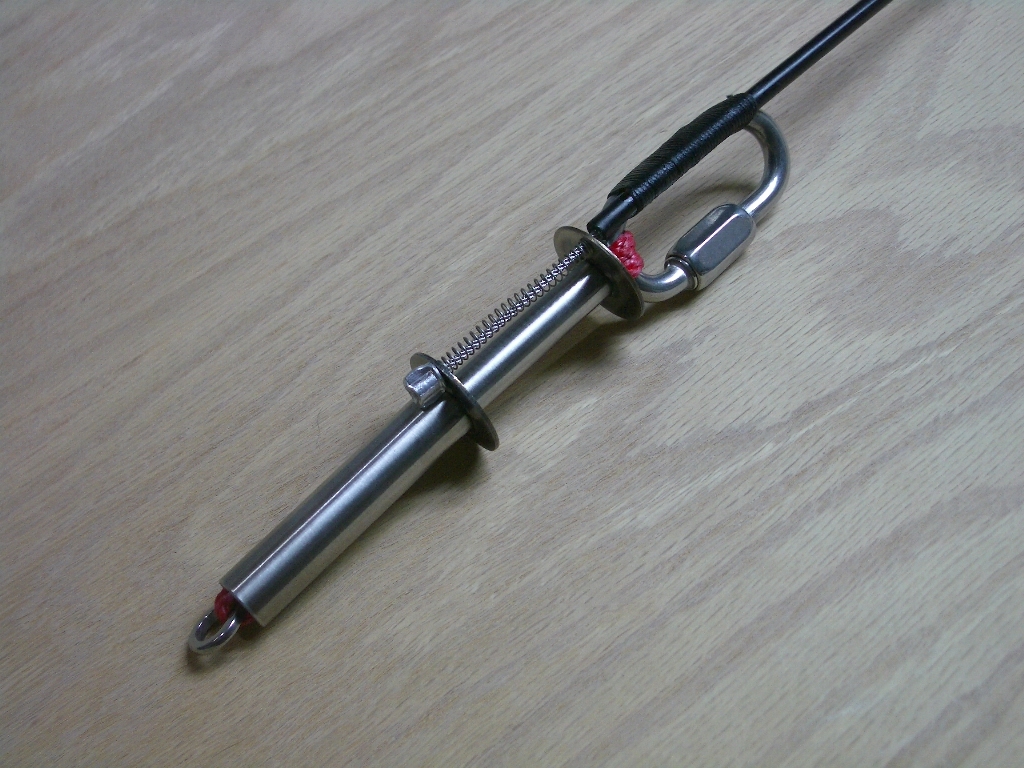
That's a DAMN GOOD release. Joe Street's a real decent guy and that thing is conscientiously, beautifully, cleverly engineered. (I helped a bit with its development.) Light, compact, enormous load capacity, excellent load to required actuation force ratio, handles slack line, durable, very reasonably priced.
You could use a stock cable length and, if necessary, extend with a line just like how you'd rig it on a glider. And if you wanted a longer cable he'd easily make an assembly up for you.
It would require the nose line from glider to be small diameter high strength line but you'd want that anyway.
For the bottom use a Monkey's Fist or button...
http://www.flickr.com/photos/aerotowrelease/8306300488/
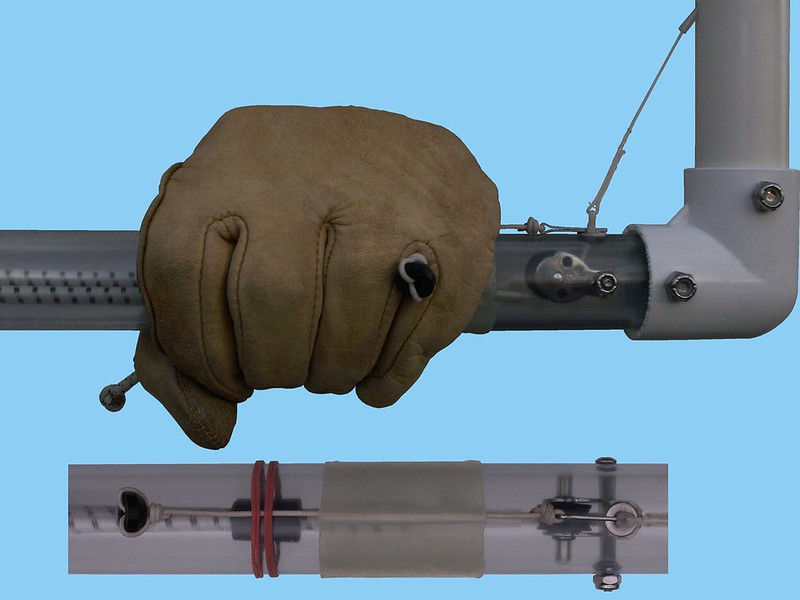
...so there's zilch chance of getting fingers or anything snagged.
That's my best shot at the moment but you can take a look at my photos:
http://www.flickr.com/photos/aerotowrelease/
and maybe come up with other thoughts.
http://www.getoffrelease.com/

That's a DAMN GOOD release. Joe Street's a real decent guy and that thing is conscientiously, beautifully, cleverly engineered. (I helped a bit with its development.) Light, compact, enormous load capacity, excellent load to required actuation force ratio, handles slack line, durable, very reasonably priced.
You could use a stock cable length and, if necessary, extend with a line just like how you'd rig it on a glider. And if you wanted a longer cable he'd easily make an assembly up for you.
It would require the nose line from glider to be small diameter high strength line but you'd want that anyway.
For the bottom use a Monkey's Fist or button...
http://www.flickr.com/photos/aerotowrelease/8306300488/

...so there's zilch chance of getting fingers or anything snagged.
That's my best shot at the moment but you can take a look at my photos:
http://www.flickr.com/photos/aerotowrelease/
and maybe come up with other thoughts.
- Tad Eareckson
- Posts: 9149
- Joined: 2010/11/25 03:48:55 UTC
Re: Best way to make nose release on platform launch
One important note about platform launching......and handles so pilot can hold on during taxi (like an aero tow cart).
A popped nose release doesn't - and probably shouldn't - commit one to becoming airborne. One can stay pulled in to hold himself on the truck and ease out to feel his way into the air - just like on a dolly launch. Makes the nose release an even less critical issue.
Owe that one entirely to Bill Cummings.
http://www.ushawks.org/forum/viewtopic.php?f=2&t=756
Discussion with Tad about Towing / Foot Launch
- Tad Eareckson
- Posts: 9149
- Joined: 2010/11/25 03:48:55 UTC
Re: Best way to make nose release on platform launch
Here's an issue we need to address. From the Wills Wing T2 manual:
They waste a column on the "Pilot Weight" which is actually hook-in weight and assume that it's 250 pounds across the board. That's probably the most you're gonna see although max hook-in for a 154 is 285.
They give two "Pilot CG Positions", 30 and 50, which I'm guessing is inches aft of the control bar for neutral and full push-out.
They give three nose "Tether Angles" - 30, 45, 60 degrees.
For the two hang positions they give the ratios of stress on the keel to its capacity at the three tether angles.
- Hanging neutral they're 10, 26, 35 percent and rated as OK, OK, Marginal.
- Pushed out they're 30, 44, 58 percent and rated as OK, Danger, Danger.
So my thoughts on configuring for topless...
You should configure for topless even if you're not flying them 'cause you might - and options are always nice.
The shallower the nose tether angle the less bending stress on the keel but the more stress on the tether and nose release.
I don't know if there's anything magical about the cited seven degrees positive pitch attitude but bias it as low as safely possible. I'm thinking you should be able to determine a safe pitch attitude by making a dry run with the nose safety engaged and having someone pull the nose down until the lift generation starts getting a bit light.
Advise/Train pilots to pull in as the truck accelerates - just as they'd do on an aerotow launch dolly. The stress gets taken off the nose release (reduced actuation effort) and they're launching with more airspeed and thus control. Win/Win.
P.S. And that's also analogous to the way you wanna release the glider from aerotow. Pull in to reduce the tow tension and stress and wear and tear on the release and prevent the glider from mushing or stalling when you disconnect.
Summary of the table...Because of the lack of a kingpost and top rigging on the T2 design, tethering the glider by the nose, such as is commonly done during platform towing operations, creates the potential for overloading the keel tube of the glider which could result in a structural failure. To avoid overloading the keel, any tether line attached to the nose should pull as much as possible in line with the keel, and in no case in a direction more than 45 degrees below the line of the keel tube itself.
As the following table indicates, the load on the keel is also very sensitive to pilot weight and CG position. With a nose release tether angle of 45 degrees, the load on the keel is marginally acceptable at a pilot position corresponding to free flight airspeed of approximately 30mph. With an arms extended pilot position, the keel will be overstressed and the front wires will be quite slack.
A keel angle of 7 degrees has been used for platform tow operations, which allowed the glider to start lifting off the chocks at approximately 30 m.p.h.
They waste a column on the "Pilot Weight" which is actually hook-in weight and assume that it's 250 pounds across the board. That's probably the most you're gonna see although max hook-in for a 154 is 285.
They give two "Pilot CG Positions", 30 and 50, which I'm guessing is inches aft of the control bar for neutral and full push-out.
They give three nose "Tether Angles" - 30, 45, 60 degrees.
For the two hang positions they give the ratios of stress on the keel to its capacity at the three tether angles.
- Hanging neutral they're 10, 26, 35 percent and rated as OK, OK, Marginal.
- Pushed out they're 30, 44, 58 percent and rated as OK, Danger, Danger.
So my thoughts on configuring for topless...
You should configure for topless even if you're not flying them 'cause you might - and options are always nice.
The shallower the nose tether angle the less bending stress on the keel but the more stress on the tether and nose release.
I don't know if there's anything magical about the cited seven degrees positive pitch attitude but bias it as low as safely possible. I'm thinking you should be able to determine a safe pitch attitude by making a dry run with the nose safety engaged and having someone pull the nose down until the lift generation starts getting a bit light.
Advise/Train pilots to pull in as the truck accelerates - just as they'd do on an aerotow launch dolly. The stress gets taken off the nose release (reduced actuation effort) and they're launching with more airspeed and thus control. Win/Win.
P.S. And that's also analogous to the way you wanna release the glider from aerotow. Pull in to reduce the tow tension and stress and wear and tear on the release and prevent the glider from mushing or stalling when you disconnect.
-
Steve Davy
- Posts: 1338
- Joined: 2011/07/18 10:37:38 UTC
Re: Best way to make nose release on platform launch
I wonder if Garrett will be able to muster a thank you for the considerable effort that Tad has put into replying to his post.
- Tad Eareckson
- Posts: 9149
- Joined: 2010/11/25 03:48:55 UTC
Re: Best way to make nose release on platform launch
Funny, I've lately been wondering the exact same thing. Been giving him the benefit of the doubt but after just checking on The Jack Show and noting that subsequent to my first response he's managed the time to make three posts on a Juan Saa thread...
And, of course, speaking of Juan...
http://www.hanggliding.org/viewtopic.php?t=27393
Pro towing: 1 barrel release + weak link or 2 barrel release
By the way, Garrett...
And, of course, speaking of Juan...
http://www.hanggliding.org/viewtopic.php?t=27393
Pro towing: 1 barrel release + weak link or 2 barrel release
Juan Saa - 2012/10/18 01:19:49 UTC
The normal braking force in pounds for a weak link is around 180, at least that is the regular weak link line used at most aerotow operations. By adding a second weak link to your bridal you are cutting the load on each link by half, meaning that the weak link will not break at the intended 180 pounds but it will need about 360.
If that is what you use and is what your instructor approved then I have no business on interfering, i dont know if you are using the same weak link material but there shoul be only ONE weak link on a tow bridle for it to be effective in breaking before higher loads are put into you and the glider should the glider gets to an attitude or off track so much that the safety fuse of the link is needed to break you free from the tug.
I made the same mistake on putting two weak links thinking that I was adding protection to my setup and I was corrected by two instructors on separate occacions at Quest Air and at the Florida RIdge.
Zack C - 2012/10/18 01:48:26 UTC
Each end of the bridle sees about half the towline tension. As stated, I'm talking about putting one weak link on each bridle end. The tension on one end isn't affected by the presence or lack of a weak link on the other end.
Every testing account I've ever seen puts the breaking strength around 130 pounds.
Juan Saa - 2012/10/18 14:45:18 UTC
I continue to disagree on the two weak link idea but I can see I don't have the complete information to argue with those who like that setup. I for one consider it unsafe. I will check again with those who corrected me and to clarify the reasons why, in the meantime, I'm going out and fly!
Birds of a feather I'm guessing...michael170 - 2012/11/28 20:54:02 UTC
What did you find out from those who "corrected" you?
By the way, Garrett...
Be careful using that two hundred stuff that many of us are now happy with. If you put weak links on both ends of the bridle under Quest / Florida Ridge math rules your towline tension limit will go from the 260 to 520 pound towline tension range to 1231 to 1600 and you'll be able to lock out, tear the wings off your glider, stall the tug, and kill the tug pilot - all in one flight if you play your cards right.I was only formally trained in aero-tow...
- Tad Eareckson
- Posts: 9149
- Joined: 2010/11/25 03:48:55 UTC
Re: Best way to make nose release on platform launch
Continuing on with this thread for the benefit of Yours Truly and whoever else may be interested now or at some point in the future...
On my 2014/12/23 16:28:34 UTC I was deferring to Wills Wing but should've confessed that I could/can not get my head wrapped around the physics of their presentation of what's going on.
See the discussion, diagram, table in the T2 manual:
http://www.willswing.com/pdf/manuals/om_T2_5th_ed_Sep2012_wAssyDiag_revMarch2013.pdf
Pages 26 and 27.
I understand that you've got a problem with the topless.
- Unless you have the bar stuffed the glider wants to pitch up and plant its tail so you hafta hold the nose down to keep it at the desired pitch attitude.
- The lever arm you're using to hold the nose down is the keel length between the control frame apex and nose.
- Your effective lever arm length is the distance on the ground between the points directly below the apex and nose.
- So the lower your desired positive pitch attitude is the longer your effective lever arm is. The lower the nose the easier it is to hold the nose down. And the unresisting pilot swings/trims forward. Win/Win. Right, all you people who've assisted your idiot buddies with their idiot hang checks?
- On a kingposted glider the lower and upper tail wires brace everything. Think of the fore and aft keel sections, control frame, and kingpost as spokes on a wheel and the wires connecting their ends as the rim.
- On a topless there is no bracing to keep the keel from bending over the control frame apex and both downward forces - pilot and nose restraint - are causing bending stress. (It wouldn't matter much if the pilot were suspended from the apex point - the lever arm is really short as it is. It's the pull on the nose that's the biggie.)
But I don't understand why what the nose release tether angle should matter. If you've got a configuration trying to rotate the nose up and back a bit with a force of 75 pounds you need to oppose it with a vector force of 75 pounds down and forward a bit - perpendicular to the keel in both cases. Pull perpendicular and the tether tension is 75 pounds. As you raise the tether's (forward) anchor point towards in line with the keel the required tension heads towards infinity but the perpendicular/bending vector remains 75 pounds.
Somebody correct me if I'm wrong on this.
On my 2014/12/23 16:28:34 UTC I was deferring to Wills Wing but should've confessed that I could/can not get my head wrapped around the physics of their presentation of what's going on.
See the discussion, diagram, table in the T2 manual:
http://www.willswing.com/pdf/manuals/om_T2_5th_ed_Sep2012_wAssyDiag_revMarch2013.pdf
Pages 26 and 27.
I understand that you've got a problem with the topless.
- Unless you have the bar stuffed the glider wants to pitch up and plant its tail so you hafta hold the nose down to keep it at the desired pitch attitude.
- The lever arm you're using to hold the nose down is the keel length between the control frame apex and nose.
- Your effective lever arm length is the distance on the ground between the points directly below the apex and nose.
- So the lower your desired positive pitch attitude is the longer your effective lever arm is. The lower the nose the easier it is to hold the nose down. And the unresisting pilot swings/trims forward. Win/Win. Right, all you people who've assisted your idiot buddies with their idiot hang checks?
- On a kingposted glider the lower and upper tail wires brace everything. Think of the fore and aft keel sections, control frame, and kingpost as spokes on a wheel and the wires connecting their ends as the rim.
- On a topless there is no bracing to keep the keel from bending over the control frame apex and both downward forces - pilot and nose restraint - are causing bending stress. (It wouldn't matter much if the pilot were suspended from the apex point - the lever arm is really short as it is. It's the pull on the nose that's the biggie.)
But I don't understand why what the nose release tether angle should matter. If you've got a configuration trying to rotate the nose up and back a bit with a force of 75 pounds you need to oppose it with a vector force of 75 pounds down and forward a bit - perpendicular to the keel in both cases. Pull perpendicular and the tether tension is 75 pounds. As you raise the tether's (forward) anchor point towards in line with the keel the required tension heads towards infinity but the perpendicular/bending vector remains 75 pounds.
Somebody correct me if I'm wrong on this.
- Tad Eareckson
- Posts: 9149
- Joined: 2010/11/25 03:48:55 UTC
Re: Best way to make nose release on platform launch
No. It doesn't head towards infinity 'cause there's not infinity pulling back on it - just a glider wanting to rock back. So now I'm thinking that there's not much of a load penalty associated with going shallow and there's a huge reduction in bending force. Apologies to Wills Wing.
P.S. Seemed like the loads would get real high when thinking about trying to hold the glider steady on the ground but it wouldn't be that big a fuckin' deal if we had a firmly mounted pipe to hold onto with the other hand.
P.S. Seemed like the loads would get real high when thinking about trying to hold the glider steady on the ground but it wouldn't be that big a fuckin' deal if we had a firmly mounted pipe to hold onto with the other hand.
- Tad Eareckson
- Posts: 9149
- Joined: 2010/11/25 03:48:55 UTC
Re: Best way to make nose release on platform launch
A further thought on the release assembly...
Get a stub version of Joe's release. Minimal length on the cable assembly - just two or three inches with just a stop fitting swaged onto the actuation end (identical to the one on the release end).
Put a short 205 leechline loop on the actuation end. Tie a Double Overhand Nooses on the ends and cinch them around the cable (just upwind of the stop) such that there's no side loading applied during a pull.
Run a leechline lanyard from this loop back to a pulley at the tether anchor point, down to another pulley forward of and level with a basetube hand position, terminate with a button, adjust for minimal play.
Before the truck starts rolling the pilot has the button between the ends of his index and middle fingers with the rest of his hand gripping the basetube.
So you've got a really tight and virtually frictionless actuation system.
Get a stub version of Joe's release. Minimal length on the cable assembly - just two or three inches with just a stop fitting swaged onto the actuation end (identical to the one on the release end).
Put a short 205 leechline loop on the actuation end. Tie a Double Overhand Nooses on the ends and cinch them around the cable (just upwind of the stop) such that there's no side loading applied during a pull.
Run a leechline lanyard from this loop back to a pulley at the tether anchor point, down to another pulley forward of and level with a basetube hand position, terminate with a button, adjust for minimal play.
Before the truck starts rolling the pilot has the button between the ends of his index and middle fingers with the rest of his hand gripping the basetube.
So you've got a really tight and virtually frictionless actuation system.